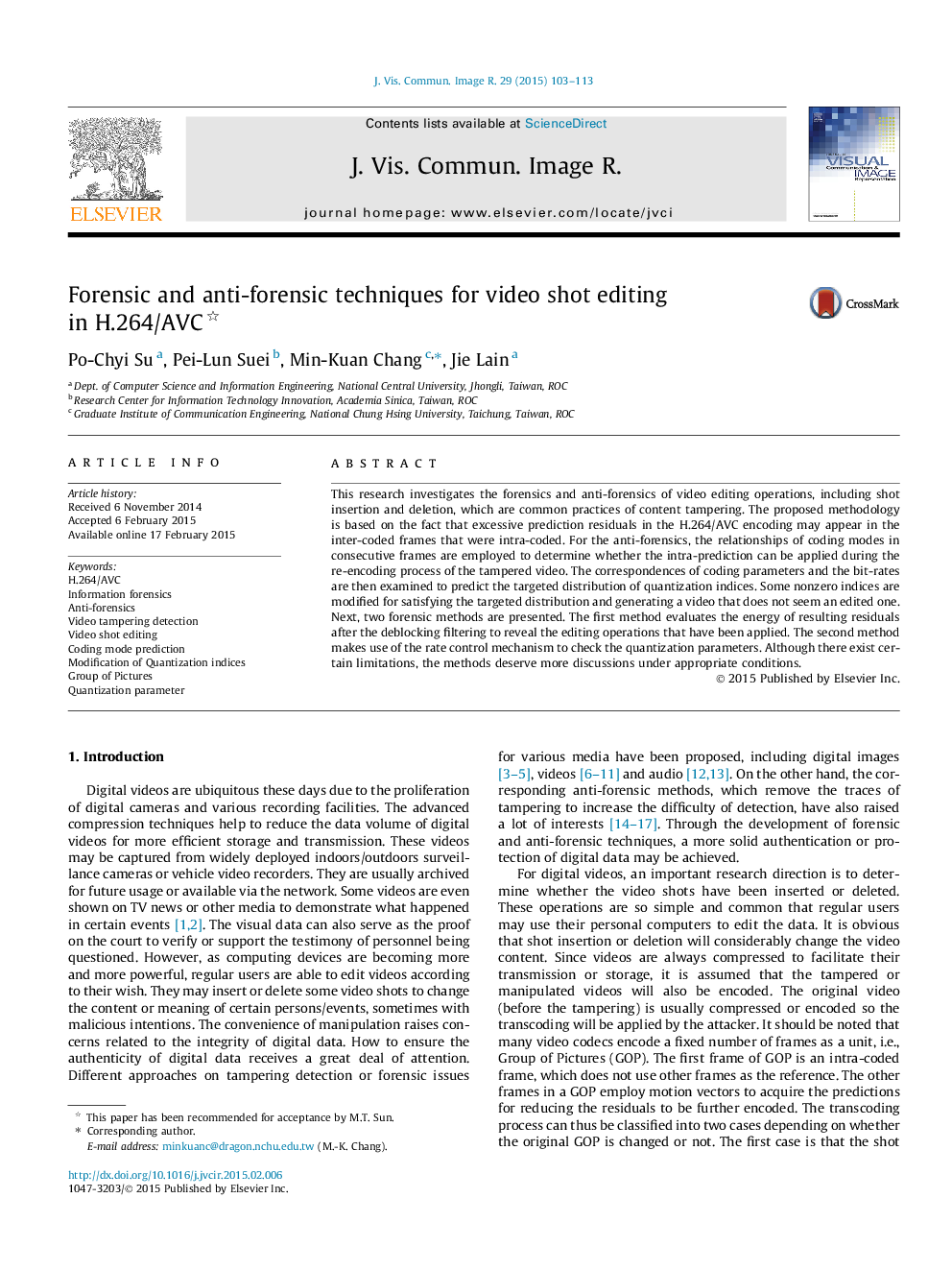| Article ID | Journal | Published Year | Pages | File Type |
|---|---|---|---|---|
| 529211 | Journal of Visual Communication and Image Representation | 2015 | 11 Pages |
•The forensics and anti-forensics of digital videos are investigated.•An anti-forensic method to generate H.264 videos without abnormal coding modes and redundancies.•The forensic methods based on the deblocking filter and checking the quantization parameters.
This research investigates the forensics and anti-forensics of video editing operations, including shot insertion and deletion, which are common practices of content tampering. The proposed methodology is based on the fact that excessive prediction residuals in the H.264/AVC encoding may appear in the inter-coded frames that were intra-coded. For the anti-forensics, the relationships of coding modes in consecutive frames are employed to determine whether the intra-prediction can be applied during the re-encoding process of the tampered video. The correspondences of coding parameters and the bit-rates are then examined to predict the targeted distribution of quantization indices. Some nonzero indices are modified for satisfying the targeted distribution and generating a video that does not seem an edited one. Next, two forensic methods are presented. The first method evaluates the energy of resulting residuals after the deblocking filtering to reveal the editing operations that have been applied. The second method makes use of the rate control mechanism to check the quantization parameters. Although there exist certain limitations, the methods deserve more discussions under appropriate conditions.
